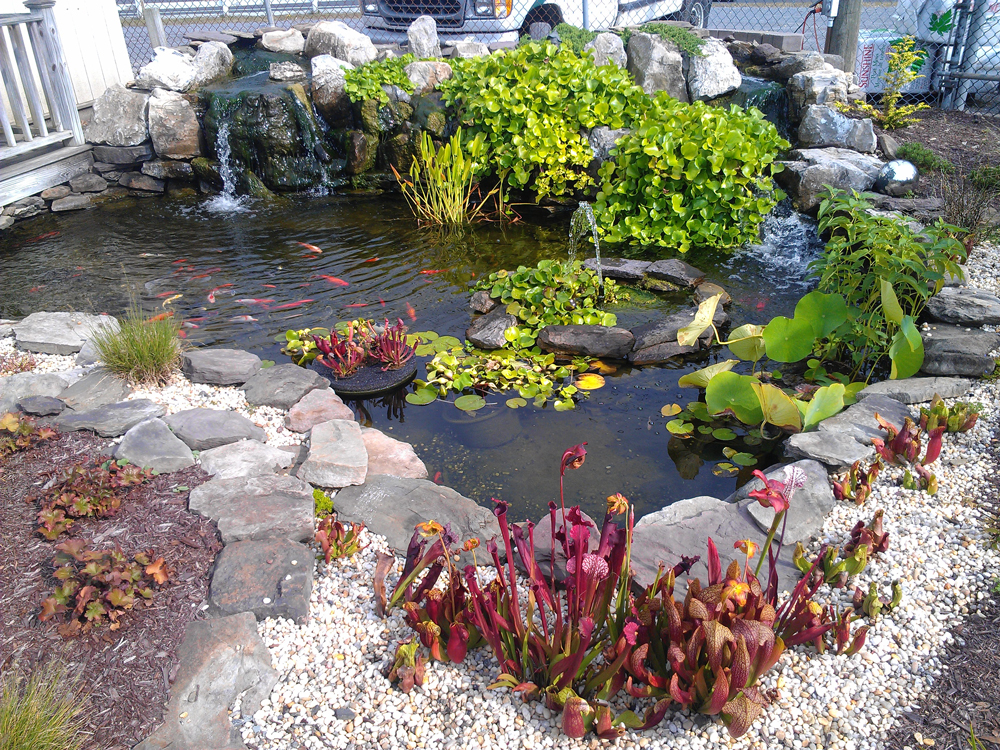Natural Filtration 301 Chapter 2
Passive Filtration
Wherever plants are simply in contact with the water, whether floating at the surface, rooted in the bottom or planted along the edges, they will absorb nutrients and other unwanted substances from the water column primarily through their roots, but even through submerged stems and leaves. We refer to this simple contact absorption in still water as “passive filtration”, filtering without pumping water. Planted in the substrate or in soil-filled pots, lilies and other submerged aquatics can rely on the organic content of the soil they’re in, so they take correspondingly less out of the water, but take away the soil and plants are forced to depend on the nutrients in the water. This is the simple principle behind Passive Bog Filtration. Plants set in clean gravel, without soil or any other food source, can be harnessed to remove whatever nutrients are in the water. Whether the goal is to use those nutrients to produce plant growth, or to use them up to prevent algae growth, nutrients are the key to Passive Bog Filtration. Filter Bogs need three things to function: nutrients in the water, a medium through which the nutrient-laden water can move and plants to consume the nutrients. The bog medium, be it peat or clay, sand or gravel, needs to be infertile, so plants have to take up nutrients in the water to survive; accessible to water, so the roots have access to the nutrients and supportive, so roots can take hold and keep plants anchored.
Regardless of which type of Passive Filtration, all share a number of advantages:

- Simple to install, whether floating or fixed
- No power required – Passive Filters operate without pumps or electricity
- Self–adjusting – plants growth scales up or down to match the available nutrient load
- Attractive appearance – no man-made box filter can match the beauty of a planted bog
Wherever plants are simply in contact with the water, whether floating at the surface, rooted in the bottom or planted along the edges, they will absorb nutrients and other unwanted substances from the water column primarily through their roots, but even through submerged stems and leaves. We refer to this simple contact absorption in still water as “passive filtration”, filtering without pumping water. Planted in the substrate or in soil-filled pots, lilies and other submerged aquatics can rely on the organic content of the soil they’re in, so they take correspondingly less out of the water, but take away the soil and plants are forced to depend on the nutrients in the water. This is the simple principle behind Passive Bog Filtration. Plants set in clean gravel, without soil or any other food source, can be harnessed to remove whatever nutrients are in the water. Whether the goal is to use those nutrients to produce plant growth, or to use them up to prevent algae growth, nutrients are the key to Passive Bog Filtration. Filter Bogs need three things to function: nutrients in the water, a medium through which the nutrient-laden water can move and plants to consume the nutrients. The bog medium, be it peat or clay, sand or gravel, needs to be infertile, so plants have to take up nutrients in the water to survive; accessible to water, so the roots have access to the nutrients and supportive, so roots can take hold and keep plants anchored.
Regardless of which type of Passive Filtration, all share a number of advantages:

- Simple to install, whether floating or fixed
- No power required – Passive Filters operate without pumps or electricity
- Self–adjusting – plants growth scales up or down to match the available nutrient load
- Attractive appearance – no man-made box filter can match the beauty of a planted bog




